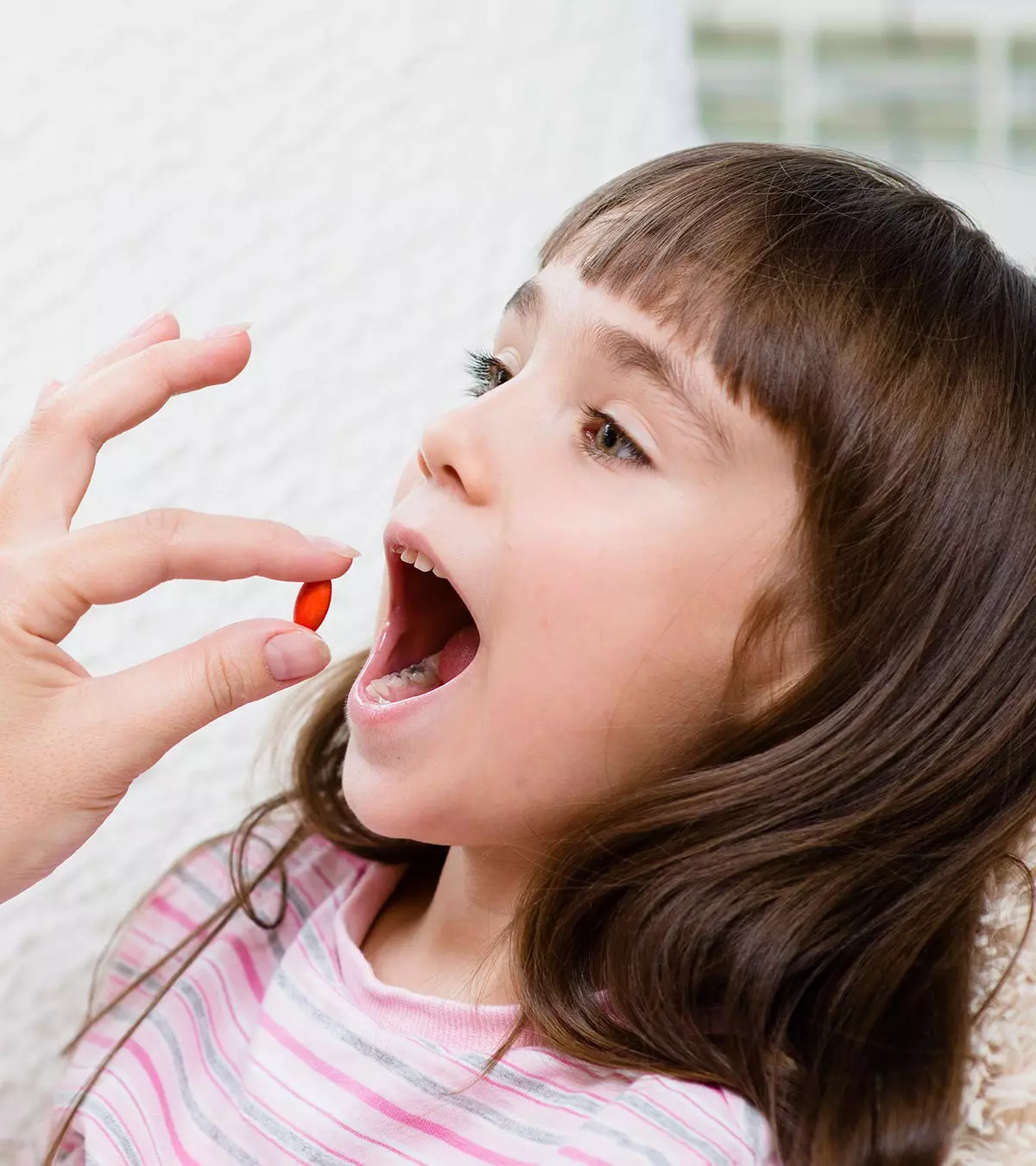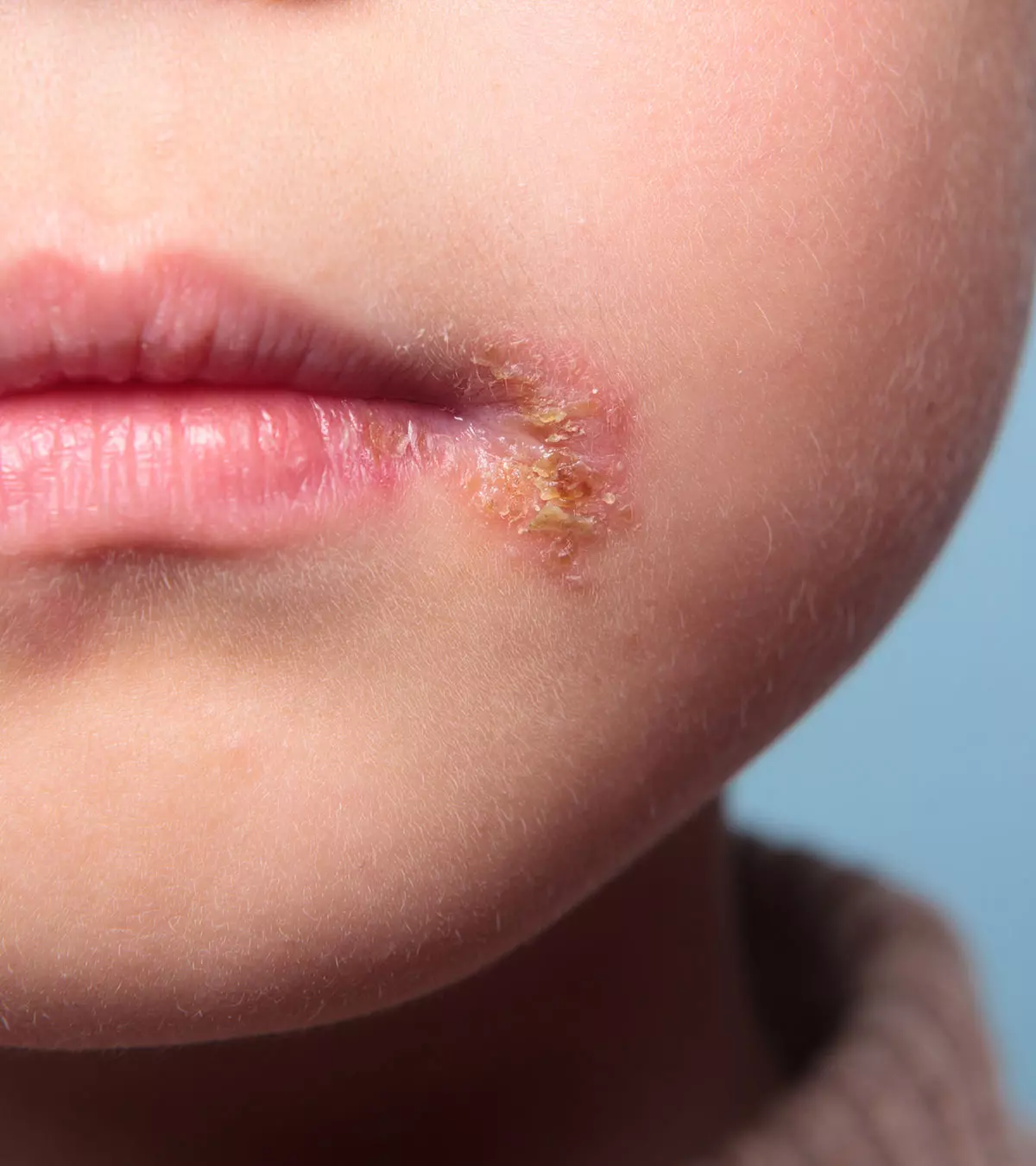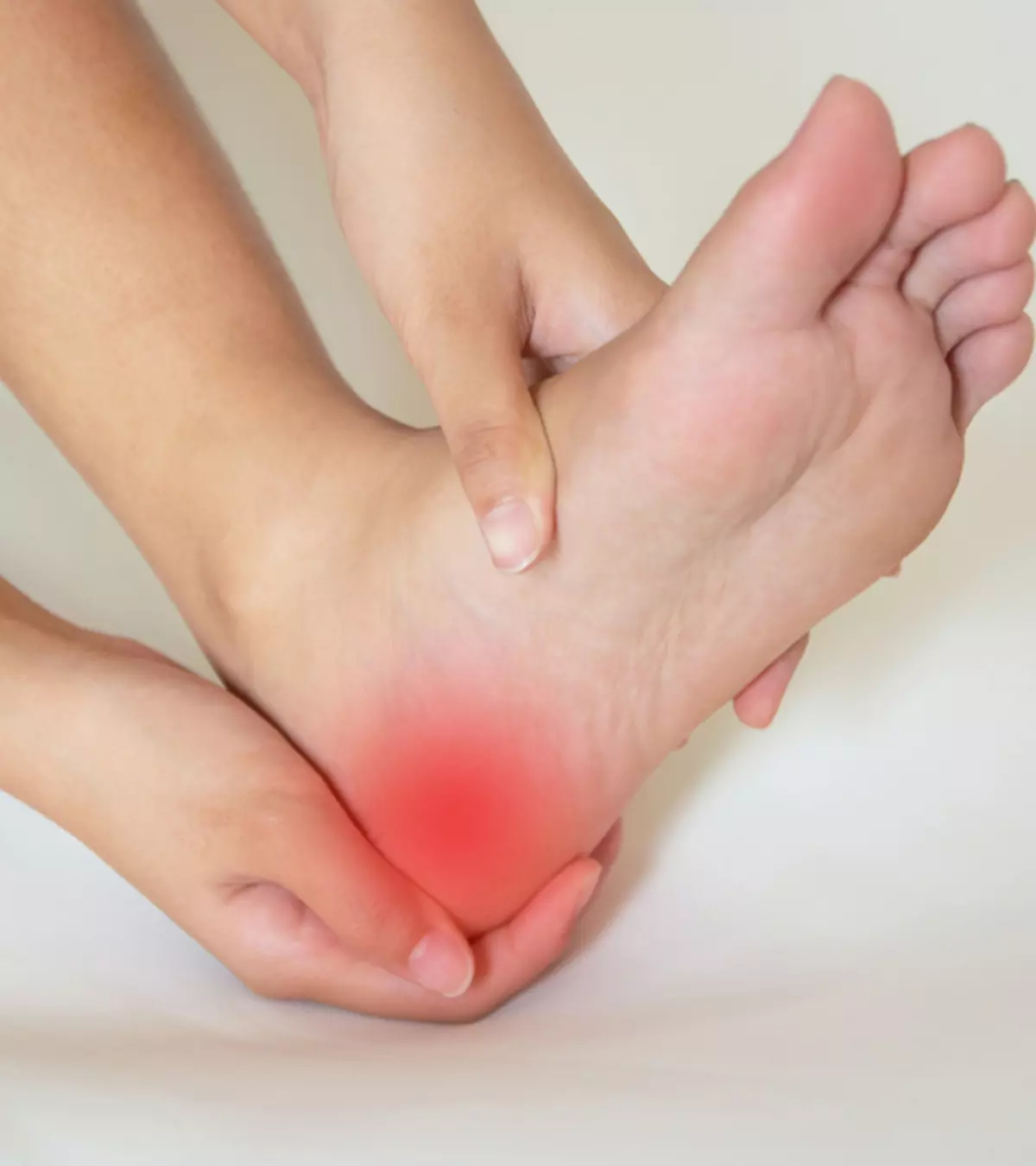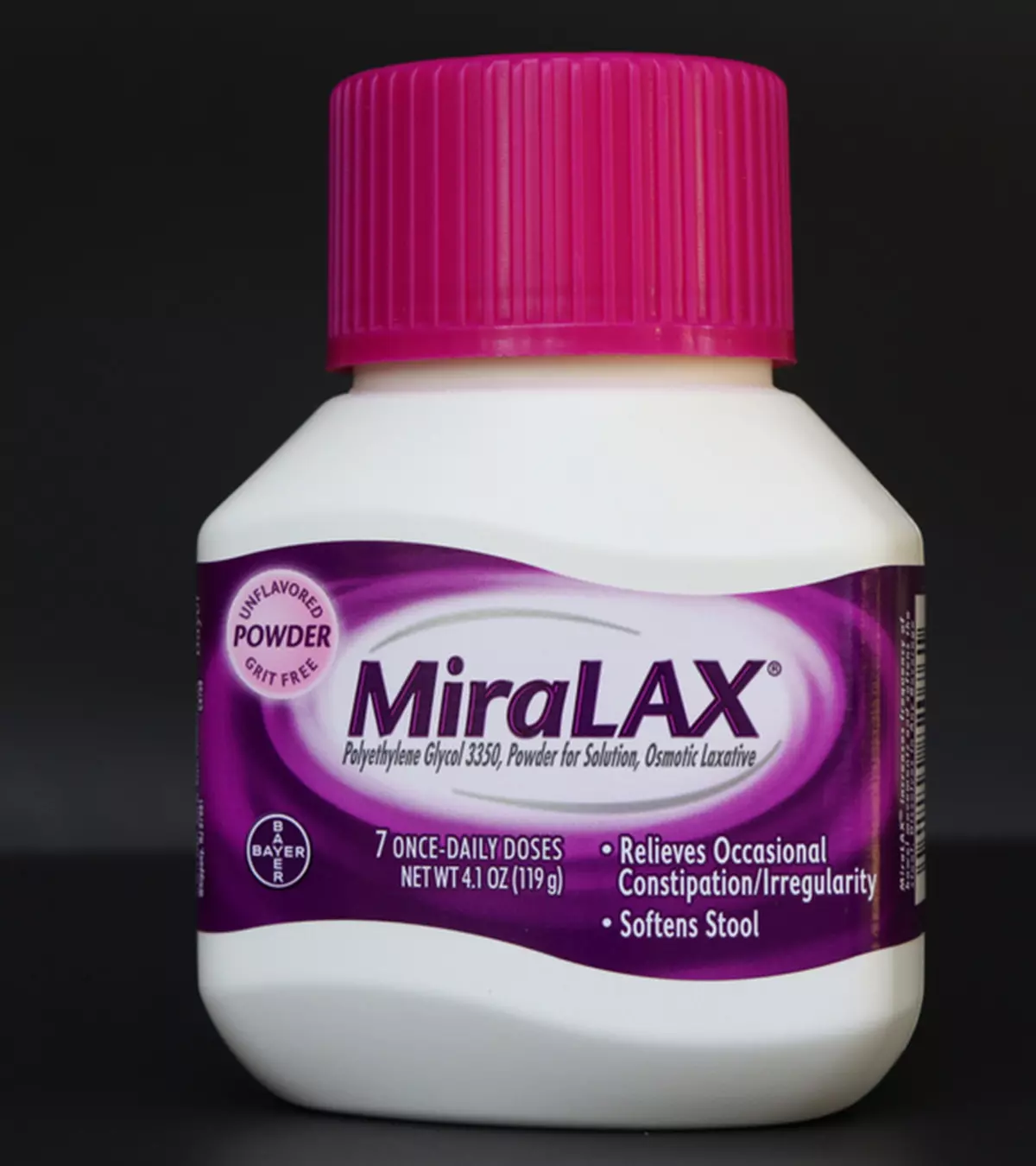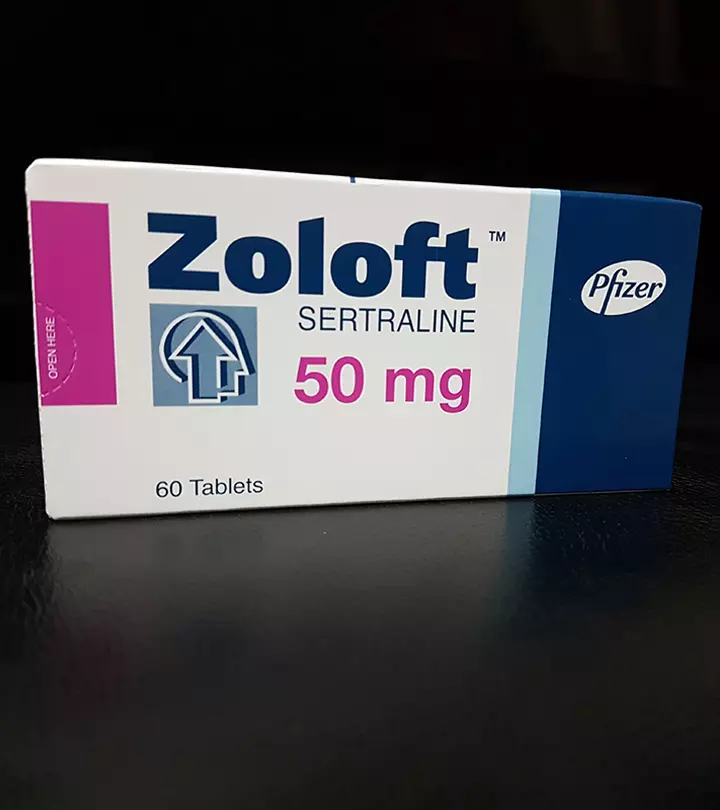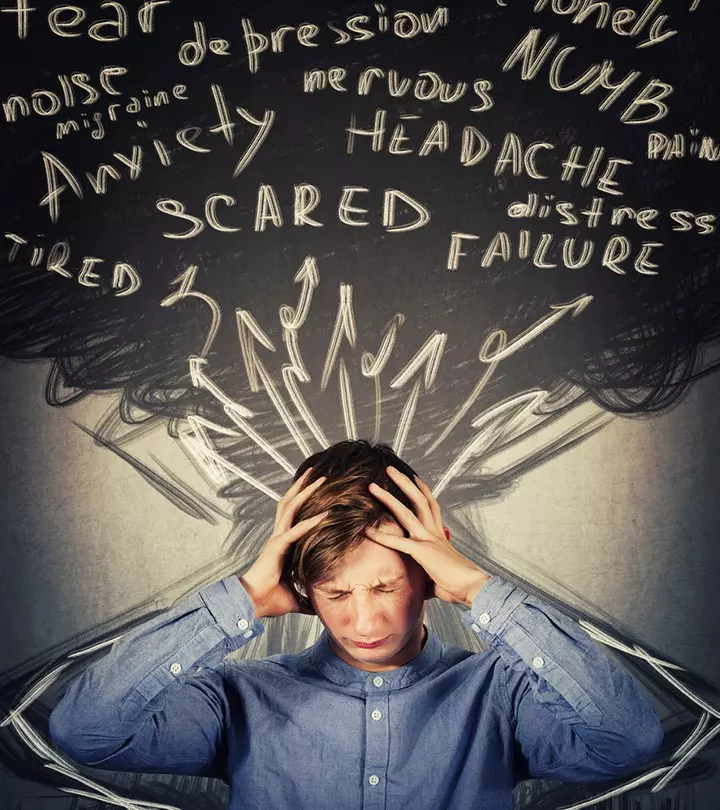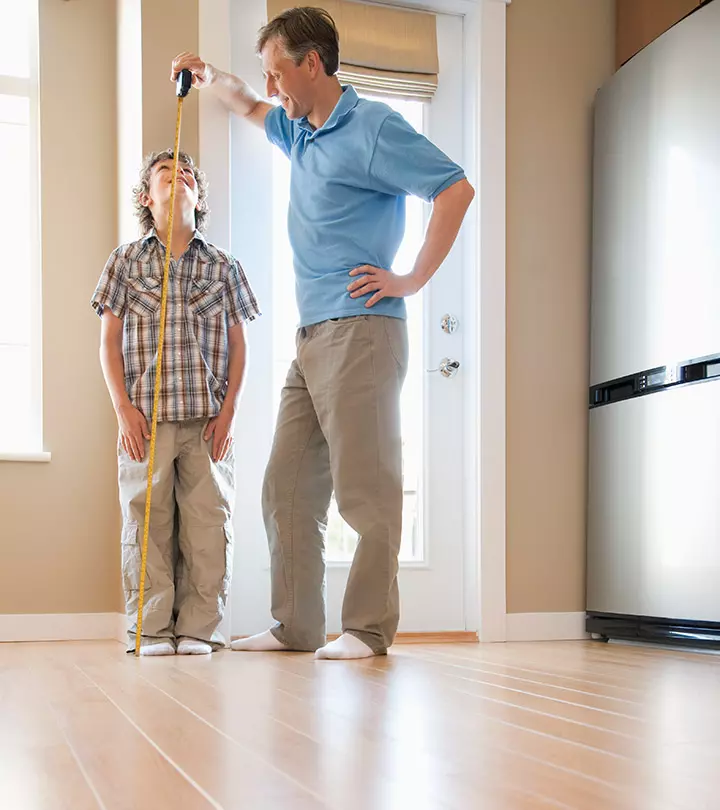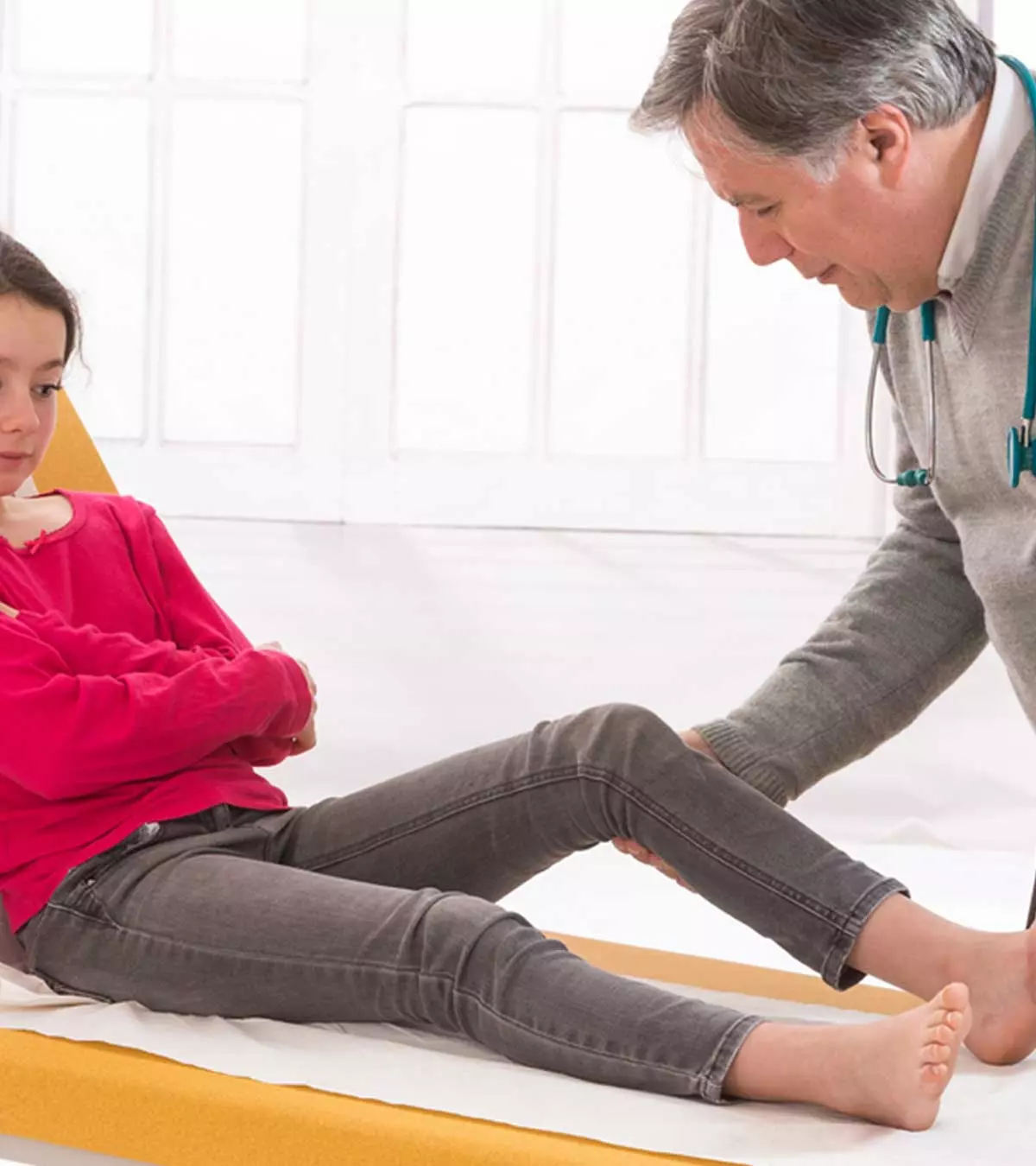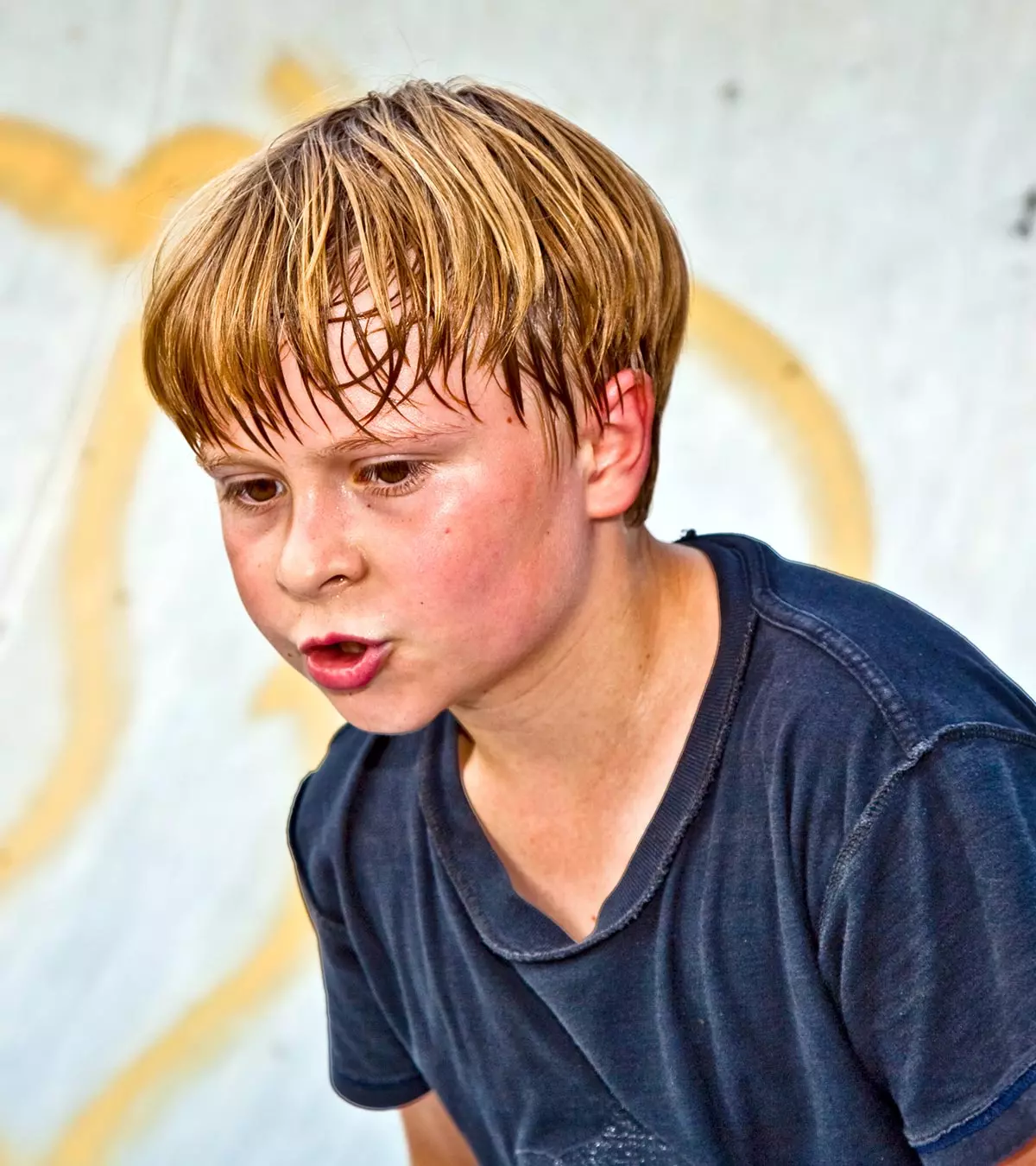
Image: Shutterstock
Hallucinations in children can be a part of normal development and often resolve without complications. These are sensory experiences without real stimuli. Children may tell you about something that they see, hear, smell, taste, or feel that is not present.

Hallucinations can be pleasant or unpleasant and may interfere with the child’s normal functioning. Some children may experience hallucinations due to the early onset of psychiatric disorders, such as bipolar disorder or schizophrenia, or non-psychotic illnesses, such as high fever. Although most childhood hallucinations can be transient, it is recommended to seek medical attention.
Read on to know the prevalence, causes, types, and treatments of hallucination in children.
Key Pointers
- Hallucinations in children are common and can be a part of their normal development.
- Auditory and visual hallucinations are common in children among the different hallucination types that exist.
- Extreme tiredness, intake of high-dose medications, and emotional stress are a few reasons that could cause hallucinations in children.
- Treating the underlying cause and providing emotional support may help manage hallucinations in children.
Are Childhood Hallucinations Common?
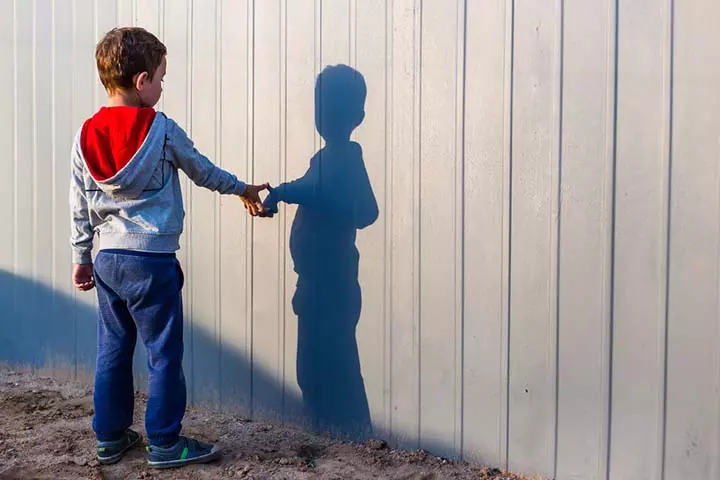
Recent data shows that hallucinatory experiences are common in children but more so in adults (1). A study published by the Cambridge University Press (2018) stated an increased prevalence rate of around 13–17% among children between ages nine and 12 and a decrease to 5–7.5% in adolescence (13 to 18 years) (2).
In clinical practice, hallucinations are rare in children younger than seven years of age. However, it may be undetected because of the inability to communicate their feelings due to limited cognitive development in children.
What Are The Types Of Hallucinations In Children?
Sensory hallucinations can be of different types, and some children may experience more than one type of hallucination.
Some types of hallucinations are as follows (2)(3):
- Visual hallucinations:
When a child sees things that do not exist, whether an object, person, visual pattern, or light. For example, the child may see flashing lights invisible to others or a person not in the room.
- Auditory hallucinations:
These cause children to hear nonexistent sounds such as hissing or whistling. Children most commonly hear voices saying something critical or complimentary or a running commentary of someone’s actions. Some children experience command hallucinations, where voices instruct the child to do specific actions, including serious and life-threatening ones. - Olfactory hallucinations:
Also called “phantom smell” or phantosmia, these cause the child to experience smells that do not exist. They may complain of unpleasant odors, such as smoke, rotten flesh, urine, feces, or vomit, or pleasant smells. They may experience it in one or both nostrils persistently or occasionally (4).
- Tactile hallucinations:
These may cause a feeling of being touched. Many children may complain of feeling bugs crawling on their skin. It is often seen in the use of illegal drugs such as cocaine or amphetamine. - Gustatory hallucinations:
These involve the perception of taste. The child may experience sensations of something not present, such as an unpleasant and strange metallic taste.
- Hallucinations related to sleep:
These may be experienced when waking up (hypnopompic) and falling asleep (hypnagogic). Children may see moving objects, form images, hear sounds, or say they saw a ghost (5).

Auditory and visual hallucinations are more common in children, though the type of hallucination experienced may depend on the brain area involved. Studies indicate the mean lifetime prevalence rate for auditory hallucinations at 12.7 percent among children aged 5 to 12 years (13). All hallucinations, even ones that do not cause bad sensations, require medical attention to evaluate and treat the underlying cause.
What Is The Impact Of Hallucinations On Children?
Hallucinations can significantly impact a child’s emotional and social development.
- Children experiencing hallucinations may face challenges in their daily lives, affecting their relationships and academic performance.
- Studies indicate that hallucinations may lead a child to experience trauma, symptoms of distress or depressioniA condition characterized by persistent sadness, helplessness, and hopelessness that disables normal functioning. , suicidal ideations, and a negative perspective towards oneself (12).
- Caregivers must provide support and seek professional help when necessary.
What Are The Causes Of Hallucinations In Children?
Children may have hallucinations as a normal part of their development, which often resolves quickly. However, it can be uncomfortable for many children.
Some of the identifiable causes of hallucinations in children are (3)(5).
- Extreme tiredness or sleepiness
- Some high-dose prescription medications
- Severe emotional stress

- Physical illnesses such as infections, adrenal glands problems, thyroid problems, seizures, and high fever
- Psychiatric problems or mental health disorders such as childhood schizophreniaiA serious mental health condition that causes altered perceptions of reality, affecting behavior and emotions. and bipolar disordersiA mood disorder characterized by intense shifts in mood and energy levels, leading to periods of mania, depression, and normalcy.
- Vision loss can cause Charles Bonnet syndrome, where visual hallucinations occur when the brain adjusts to vision loss
- Damage to the brain sensory system from viruses, trauma, toxic substances, epilepsy, brain tumor, or substance abuse, such as the use of illegal drugs or alcohol
- Cross-sectional studies done at the Osaka Metropolitan University Hospital indicate an association between sensory processing difficulties and hallucinations, with the latter occurring in 21 percent of 335 children between the ages of 6 and 18 years (14).
- Recent bereavement of loved ones may cause auditory hallucinations of their voices, often making the child believe the person is with them.
 Research finds
Research findsSeek pediatric care if your child has hallucinations since they can cause nervousness and fear. Treating medical conditions and providing emotional support and encouragement may help manage some hallucinations in children.
What Are The Treatments For Hallucinations In Children?
Psychiatric disorders and some conditions causing hallucinations require medical treatment. Most children receive longer-term prescriptions to treat the psychiatric causes of hallucinations. The treatment may begin with specialized therapies and progress to antipsychotics if required.
The treatments for childhood hallucinations may include (2)(6).
- Psychotherapy, including psychoeducationiA therapeutic intervention that equips people with the knowledge to better cope with their psychological condition. , family therapies, de-addiction therapies, and cognitive behavioral therapy, can help manage hallucinations induced by mental illnesses.
- Antipsychotic medications such as risperidone or aripiprazole help manage hallucinations due to psychiatric disorders in children.

- Hallucinations due to non-psychiatric disorders can be managed by treating the underlying cause, such as correcting vision problems, using anti-seizure drugs for epilepsyiA chronic brain disorder where improper neural signals cause seizures. , or surgically removing brain tumors.
- Associated psychiatric disorders are often treated to reduce anxiety or stress or regulate moods to ease hallucination-related distress.
 Research finds
Research findsIn addition, providing early treatment for fever and other illnesses in children and ensuring adequate sleep and rest can also help avoid or manage hallucinations. Parents and caregivers are also encouraged to foster an open environment for discussion, allowing children to express their feelings and experiences related to hallucinations. Providing emotional support and understanding can significantly alleviate the distress caused by these experiences.
Frequently Asked Questions
1. How should I handle a child’s hallucination?
If your child is having hallucinations, talk to them about how they feel and try to understand the cause of these hallucinations. Take an interest in their school and social lives, among other things. If you are still concerned, consult a physician or pediatrician so they can help or refer you to a child or adolescent psychiatrist (6).
2. How common are visual hallucinations in children?
Visual hallucinations are more common in children with psychosis, such as those with emotional and behavioral disorders, bipolar I disorder, or childhood-onset schizophrenia (2).
3. Can ADHD cause hallucinations?
Yes. ADHD can cause auditory hallucinations, which are significantly mediated by dysphoric mood, in adults and children (7). In addition, FDA-approved ADHD medications can cause hallucinations as an adverse drug reaction (8).
4. Can a 3-year-old hallucinate?
Yes. Hallucinations have been observed in toddlers and preschoolers and are termed “early-onset hallucinations” and “very early onset hallucinations.” In most cases, these hallucinations are visual and tactile. It is not uncommon and is associated with severe anxiety and phobic behavior in toddlers (1) (9).
5. Can autism cause hallucinations?
Psychiatrist Dr. Ozan Toy from Parsippany, New Jersey, opines, “Autism doesn’t directly cause hallucinations, and they are not part of the DSM criteria for diagnosing autism spectrum disorder. However, children with autism might experience sensory processing issues that lead to misperceptions. Furthermore, some individuals with developmental disabilities may experience hallucinations.”
Hallucinations in children can occur as a part of normal brain development or indicate emotional problems. They may or may not be accompanied by abnormal behavior. They can also occur when children experience upsetting thoughts and emotions at home, at school, or with peers. In most cases, even the hallucinations caused by psychosis and psychiatric disorders can improve with long-term psychotherapies or antipsychotic medication use or by treating the underlying cause. Talk to your child and ask them to explain the bizarre sensations they are experiencing. Further, ensure you seek prompt medical care and counseling for severely distressing hallucinations.
Infographic: How Are Hallucinations Different From Delusions
After knowing about the types of hallucinations, you might wonder how hallucinations differ from delusions, as both appear similar on the surface. Hallucinations are different from delusions, and the following infographic will give you more information about the areas of differences between the two. So read on and remember to save it for sure.
Some thing wrong with infographic shortcode. please verify shortcode syntax
Illustration: Types Of Hallucinations In Children Causes And Treatment

Image: Stable Diffusion/MomJunction Design Team
References
- Kim Maijer, et al.; (2019);Hallucinations in Children and Adolescents: An Updated Review and Practical Recommendations for Clinicians.
https://academic.oup.com/schizophreniabulletin/article/45/Supplement_1/S5/5305656 - Assessing and managing hallucinations in children and adolescents.
https://www.cambridge.org/core/journals/bjpsych-advances/article/assessing-and-managing-hallucinations-in-children-and-adolescents/9DFC17F7B788E4DA68455B51B4B7FF88 - Hallucinations.
https://medlineplus.gov/ency/article/003258.htm - What to know about phantom smells (phantosmia).
https://ibcces.org/learning/what-to-know-about-phantom-smells-phantosmia/ - Hallucinations and hearing voices.
https://www.nidirect.gov.uk/conditions/hallucinations-and-hearing-voices#toc-2 - Hearing Voices and Seeing Things.
https://www.aacap.org/AACAP/Families_and_Youth/Facts_for_Families/FFF-Guide/Hearing-Voices-and-Seeing-Things-102.aspx - Steven Marwaha et al.; (2015); Adult attention deficit hyperactivity symptoms and psychosis: Epidemiological evidence from a population survey in England.
https://linkinghub.elsevier.com/retrieve/pii/S0165178115005351 - Andrew D Mosholder et al.; (2009); Hallucinations and other psychotic symptoms associated with the use of attention-deficit/hyperactivity disorder drugs in children.
https://pubmed.ncbi.nlm.nih.gov/19171629/ - Herbert A. Schreier and Judith A. Libow; (1986); Acute Phobic Hallucinations in Very Young Children.
https://www.jaacap.org/article/S0002-7138(10)60020-9/fulltext - Obstructive Sleep Apnea Patients Have Increased Occurrences of Parasomnia Symptoms.
https://aasm.org/obstructive-sleep-apnea-patients-have-increased-occurrences-of-parasomnia-symptoms/ - Kim Maijer et al.; (2019); Hallucinations in Children and Adolescents: An Updated Review and Practical Recommendations for Clinicians.
https://academic.oup.com/schizophreniabulletin/article/45/Supplement_1/S5/5305656 - Maria-De-Gracia Dominguez and M. Elena Garralda; (2018); Assessing and managing hallucinations in children and adolescents.
https://www.cambridge.org/core/journals/bjpsych-advances/article/assessing-and-managing-hallucinations-in-children-and-adolescents/9DFC17F7B788E4DA68455B51B4B7FF88 - K Maijer et al.; (2017); Auditory hallucinations across the lifespan: a systematic review and meta-analysis.
https://pubmed.ncbi.nlm.nih.gov/28956518/ - Sayaka Nishiura et al.; (2025); Association between hallucinations and sensory processing difficulties in children and adolescents.
https://www.frontiersin.org/journals/psychiatry/articles/10.3389/fpsyt.2025.1472328/full
Community Experiences
Join the conversation and become a part of our nurturing community! Share your stories, experiences, and insights to connect with fellow parents.
Read full bio of Dr. Maymunah Yusuf Kadiri
- Dr. Ozan Toy is a psychiatrist and the chief medical officer at Telapsychiatry. He specializes in psychiatric and neuropsychiatric conditions with medications, psychotherapy and somatic therapies like TMS.
 Dr. Ozan Toy is a psychiatrist and the chief medical officer at Telapsychiatry. He specializes in psychiatric and neuropsychiatric conditions with medications, psychotherapy and somatic therapies like TMS.
Dr. Ozan Toy is a psychiatrist and the chief medical officer at Telapsychiatry. He specializes in psychiatric and neuropsychiatric conditions with medications, psychotherapy and somatic therapies like TMS.
Read full bio of Dr Bisny T. Joseph
Read full bio of Dr. Ritika Shah
Read full bio of Apoorva K







